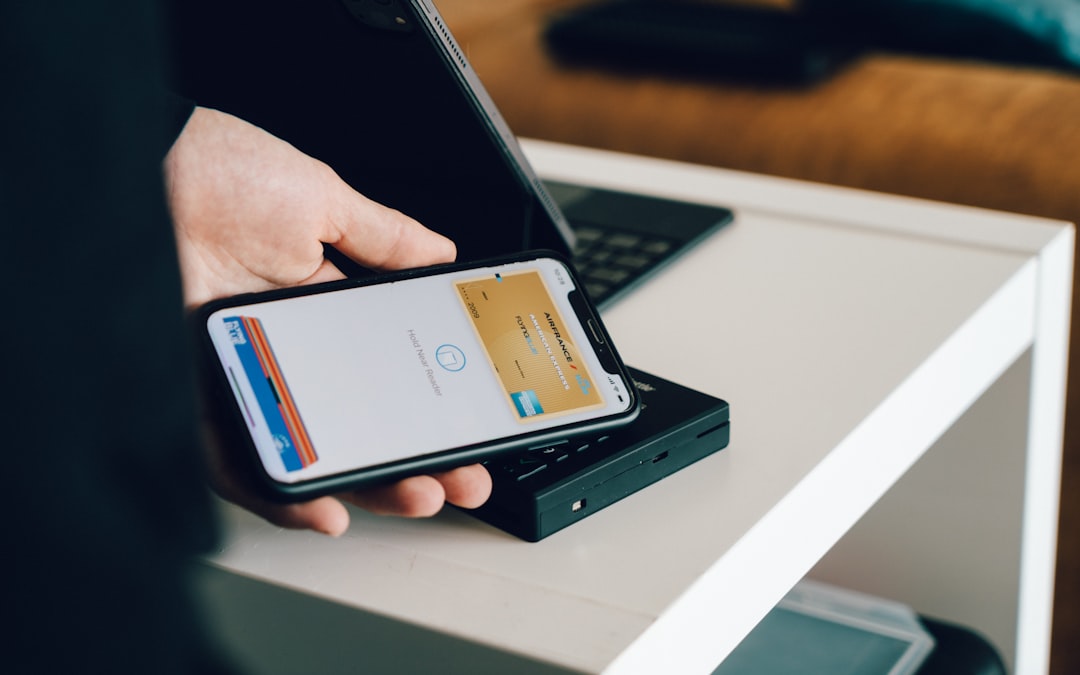In an increasingly interconnected world, the way we pay for goods and services is undergoing a profound transformation. Cash is slowly but surely giving way to digital alternatives, with e-wallets and mobile payment solutions leading the charge. These innovative platforms offer unparalleled convenience, security, and efficiency, reshaping economies and daily lives across the globe.
Did you know that by 2025, mobile payments are projected to account for nearly half of all global e-commerce transactions? This staggering growth highlights the critical importance of understanding the diverse landscape of digital payments. This guide will take you on a journey through the world of e-wallets and mobile payments, comparing their adoption, key players, and unique characteristics across different regions. By the end, you’ll be better equipped to navigate the cashless future, whether you’re traveling abroad or simply managing your finances at home.
The Global Shift Towards Digital Wallets
The transition from physical cash and cards to digital wallets represents one of the most significant shifts in modern finance. Driven by technological advancements and changing consumer habits, e-wallets have become indispensable tools for millions worldwide. They offer a seamless way to store payment information, make transactions, and even manage loyalty programs, all from a smartphone.
What is an E-Wallet?
An e-wallet, or digital wallet, is a software-based system that securely stores a user’s payment information, such as credit card numbers, bank account details, and digital currency. It allows users to make electronic transactions quickly and conveniently, often through a mobile device. These transactions can occur online, in-app, or in physical stores using technologies like NFC (Near Field Communication) or QR codes.
Why the Rapid Adoption?
Several factors contribute to the accelerating adoption of digital wallets. Convenience is paramount, as payments can be made with a tap or scan, eliminating the need for physical cards or cash. Enhanced security features, such as tokenization and biometric authentication, also play a crucial role in building consumer trust. Furthermore, in many developing regions, mobile payments offer a pathway to financial inclusion for populations previously underserved by traditional banking systems.

Asia: The Epicenter of Mobile Payments
Asia, particularly East and Southeast Asia, stands as the global leader in mobile payment adoption and innovation. This region has largely leapfrogged traditional banking infrastructure, moving directly to mobile-first solutions. The sheer volume of transactions and the diverse range of services integrated into these platforms are unparalleled.
China’s Dominance: Alipay and WeChat Pay
China is the undisputed giant in the mobile payment space, largely dominated by two behemoths: Alipay (Ant Group) and WeChat Pay (Tencent). These platforms are more than just payment apps; they are comprehensive lifestyle ecosystems. Users can pay bills, order food, book travel, invest, and even access government services, all within a single application. QR code payments are ubiquitous, from street vendors to luxury boutiques.
“In China, mobile payments have become so ingrained in daily life that cash is often refused, and even beggars accept donations via QR code.”
India’s UPI Revolution
India’s Unified Payments Interface (UPI) is a real-time payment system that has revolutionized digital transactions in the country. Launched in 2016, UPI allows instant money transfers between bank accounts using a single mobile application, regardless of the bank. Its interoperability and ease of use have led to explosive growth, making India one of the fastest-growing digital payment markets. Popular apps leveraging UPI include Google Pay, PhonePe, and Paytm.
Southeast Asia’s Diverse Landscape
Southeast Asia presents a vibrant and competitive mobile payment scene. Countries like Indonesia, Singapore, and the Philippines have seen rapid adoption of various e-wallets. Super-apps like GrabPay (Singapore/Malaysia) and GoPay (Indonesia) have integrated payment services with ride-hailing, food delivery, and other lifestyle services, mirroring the Chinese model. Each country often has its own dominant local players alongside international ones, leading to a fragmented but innovative market.

Europe & North America: Catching Up with Contactless
While Asia led the charge with QR code-based ecosystems, Europe and North America have seen a more gradual shift, largely driven by the widespread adoption of NFC-enabled contactless card payments. Mobile payments here often leverage existing card infrastructure, integrating credit and debit cards into digital wallets.
Apple Pay & Google Pay Dominance
In Western markets, Apple Pay and Google Pay (formerly Android Pay) are the most prevalent mobile payment solutions. These services allow users to link their existing bank cards and make secure, contactless payments using their smartphones or smartwatches at NFC-enabled terminals. Their strength lies in their seamless integration with popular mobile operating systems and broad acceptance at points of sale that already accept contactless card payments.
Open Banking and PSD2 in Europe
Europe’s payment landscape is significantly influenced by regulations like the Revised Payment Services Directive (PSD2) and the rise of Open Banking. These initiatives encourage competition and innovation by allowing third-party providers to access customer bank data (with consent) to offer new financial services. This has fostered the growth of various payment apps and fintech solutions, often directly linked to bank accounts rather than just cards.
The Role of Traditional Banks
Unlike some Asian markets where tech companies pioneered payments, traditional banks in Europe and North America play a more central role. Many banks have developed their own mobile banking apps with integrated payment features, or they partner with Apple Pay and Google Pay to offer digital wallet services to their customers. This integration helps bridge the gap between traditional finance and emerging digital payment methods.
Emerging Markets: Leapfrogging Traditional Banking
In many emerging economies, mobile payments have not just supplemented but often *replaced* the need for traditional banking infrastructure. With high mobile phone penetration and a large unbanked population, these regions have seen explosive growth in mobile money services, providing financial access where it was previously scarce.
Africa’s Mobile Money Success: M-Pesa
Africa is a prime example of mobile payments driving financial inclusion. M-Pesa, launched in Kenya in 2007, is perhaps the most famous success story. It allows users to send and receive money, pay bills, and even access micro-loans using basic feature phones. This agent-based model has spread across the continent, empowering millions who lack access to formal banking services.
Latin America’s Digital Transformation
Latin America is rapidly embracing digital payments, with a mix of local fintech innovations and international players. Brazil’s Pix, a government-backed instant payment system launched in 2020, has seen phenomenal adoption, enabling real-time transfers and payments 24/7. Similarly, Mercado Pago, the payment arm of e-commerce giant Mercado Libre, is widely used across the region for online and in-store transactions, often leveraging QR codes.

Security, Interoperability, and Future Trends
As digital payments become more pervasive, ensuring their security and fostering greater interoperability are paramount. The future of payments will likely see continued innovation, driven by emerging technologies and evolving consumer expectations.
Enhancing Security
Security is a cornerstone of trust in digital payments. Technologies like tokenization, which replaces sensitive card data with unique, encrypted tokens, significantly reduce the risk of fraud. Biometric authentication (fingerprint, facial recognition) adds another layer of protection. Continuous advancements in fraud detection and prevention are crucial for maintaining consumer confidence.
The Challenge of Interoperability
While domestic mobile payment systems are thriving, cross-border interoperability remains a significant challenge. Different standards, regulations, and currencies complicate seamless international transactions. Initiatives like Central Bank Digital Currencies (CBDCs) and regional payment gateways aim to address this by creating more unified and efficient cross-border payment rails.
The Future: AI, Biometrics, and Beyond
The future of mobile payments promises even greater convenience and personalization. Artificial intelligence (AI) will enhance fraud detection and offer tailored financial advice. Advanced biometrics, such as palm or vein scanning, could enable even more seamless and secure authentication. We may also see the rise of embedded payments, where transactions are integrated invisibly into our daily activities, from smart homes to autonomous vehicles.
Key Regional Payment Systems Comparison
| Region | Dominant Players/Systems | Key Characteristics |
|---|---|---|
| China | Alipay, WeChat Pay | QR code-based, super-app ecosystems, highly integrated into daily life. |
| India | UPI (Google Pay, PhonePe, Paytm) | Real-time, interoperable bank-to-bank transfers, high volume. |
| Europe/North America | Apple Pay, Google Pay | NFC-based, leverage existing card infrastructure, strong bank integration. |
| Africa | M-Pesa (Kenya), Mobile Money services | Agent-based, financial inclusion for unbanked, basic feature phone compatibility. |
| Latin America | Pix (Brazil), Mercado Pago | Instant payments, e-commerce integration, growing fintech landscape. |
Conclusion: Navigating the Cashless Future
The global landscape of e-wallets and mobile payments is incredibly dynamic and diverse. From Asia’s super-app ecosystems to Africa’s mobile money revolution and the West’s contactless card integration, each region has adopted digital payments in ways that best suit its unique economic and social context. Understanding these differences is not just academic; it’s essential for travelers, businesses, and anyone navigating the modern financial world.
As you plan your next international adventure or simply manage your daily finances, consider embracing these digital tools. They offer unparalleled convenience and often enhanced security. Always research the dominant payment methods in your destination country to ensure a smooth and hassle-free experience.
Further Reading & Resources:
- World Bank Group: Digital Payments for Development: Explore how digital payments contribute to economic development and financial inclusion globally.
- Statista: Mobile Payment Industry Overview: Access comprehensive statistics and market insights on the global mobile payment industry (some content may require subscription).
- McKinsey & Company: Global Payments Report: Dive deeper into the strategic trends and outlook for the global payments industry.
What are your favorite e-wallets or mobile payment apps, and why? Share your experiences in the comments below!
